How to Pack Camp Kitchen: 6 Steps for Stress-Free Camping
Learn how to pack camp kitchen easily in 6 simple steps. Unlock stress-free outdoor cooking and set up your adventure now!

The best way to pack a camp kitchen is to sort equipment into organized, watertight bags or containers while planning meals and securing all items to ensure easy accessibility and safety. As a passionate camper and experienced blogger, I have spent years refining my approach to create an efficient and safe camp kitchen.
In this article, I will share practical tips, techniques, and equipment recommendations that will help you pack your camp kitchen with confidence and ease. Whether you are a seasoned camper or new to the experience, this guide will provide a detailed, step-by-step process that focuses on organization, meal planning, and ensuring food safety.
Contents Include
- 1 Understanding Your Camp Kitchen Needs
- 2 The Importance of an Organized Camp Kitchen
- 3 Preparing for Your Camping Trip
- 4 Step-by-Step Guide to Packing Your Camp Kitchen
- 5 Equipment and Gear Recommendations
- 6 Tips for Maintaining Food Safety on the Trail
- 7 Setting Up the Camp Kitchen on Arrival
- 8 Camping Kitchen Packing Checklist
- 9 Lessons Learned from Personal Experience
- 10 FAQs about Camp Kitchen
- 11 Final Thoughts
Understanding Your Camp Kitchen Needs
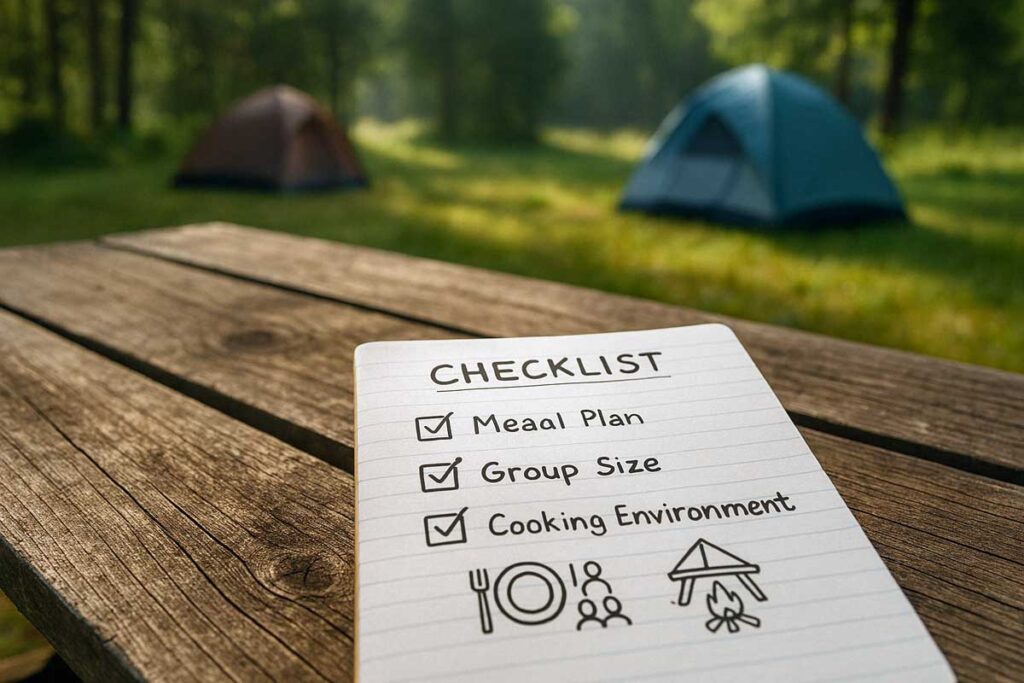
Before you start packing, it is important to consider a few key factors:
- Duration and Group Size: Determine the length of your trip and the number of people you will be cooking for. Longer trips and larger groups may require additional supplies and extra storage for food and equipment.
- Meal Plan: Outline your planned meals. A clear meal plan helps you determine the quantity of food, the types of cookware you need, and the specific utensils required for each dish.
- Cooking Environment: Consider your campsite setting. Are you in a remote area with basic facilities or a well-serviced campground? Knowing this will help you decide how much gear you need to bring for food safety and waste management.
A well-thought-out plan will reduce unnecessary items in your kit and ensure that every item you pack has a purpose.
The Importance of an Organized Camp Kitchen
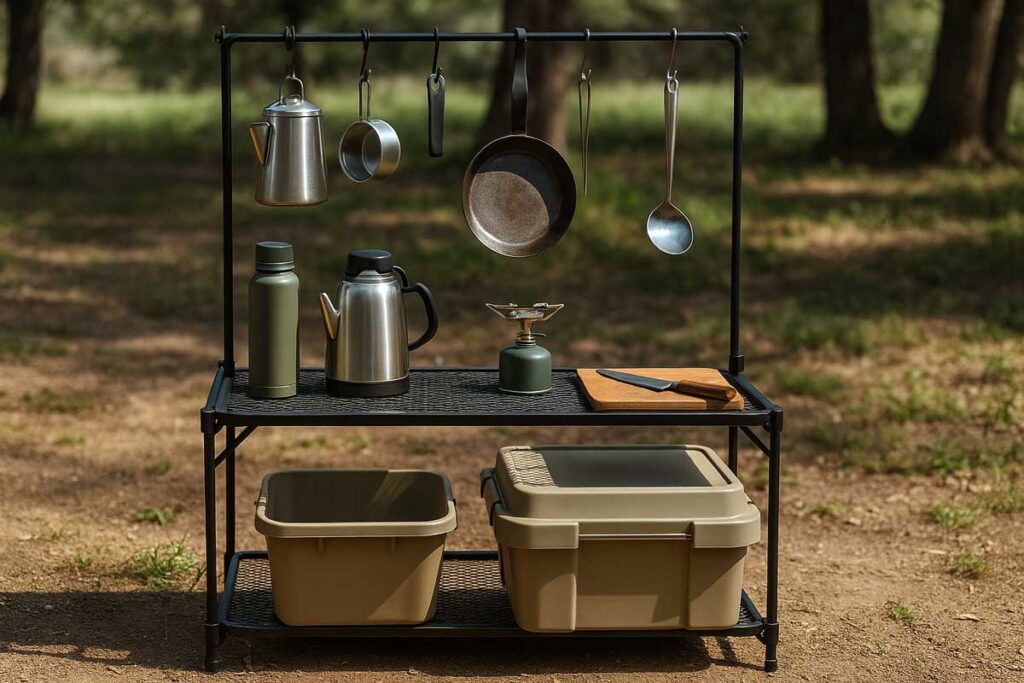
An organized camp kitchen is essential for several reasons:
- Efficiency: Quickly locate tools and ingredients without wasting precious time.
- Food Safety: Proper storage minimizes the risk of contamination and spoilage.
- Space Management: Maximizes limited space inside tents, trucks, or backpacks.
- Stress Reduction: Reduces the burden of managing multiple items in a small area, allowing you to focus on enjoying the experience.
When you pack your camp kitchen using effective systems and methods, you set the tone for a smooth camping trip that is both safe and enjoyable.
Preparing for Your Camping Trip
Preparation is key. Prior planning can help you make informed decisions about what to pack and how to pack it.
Meal Planning and Menu Creation
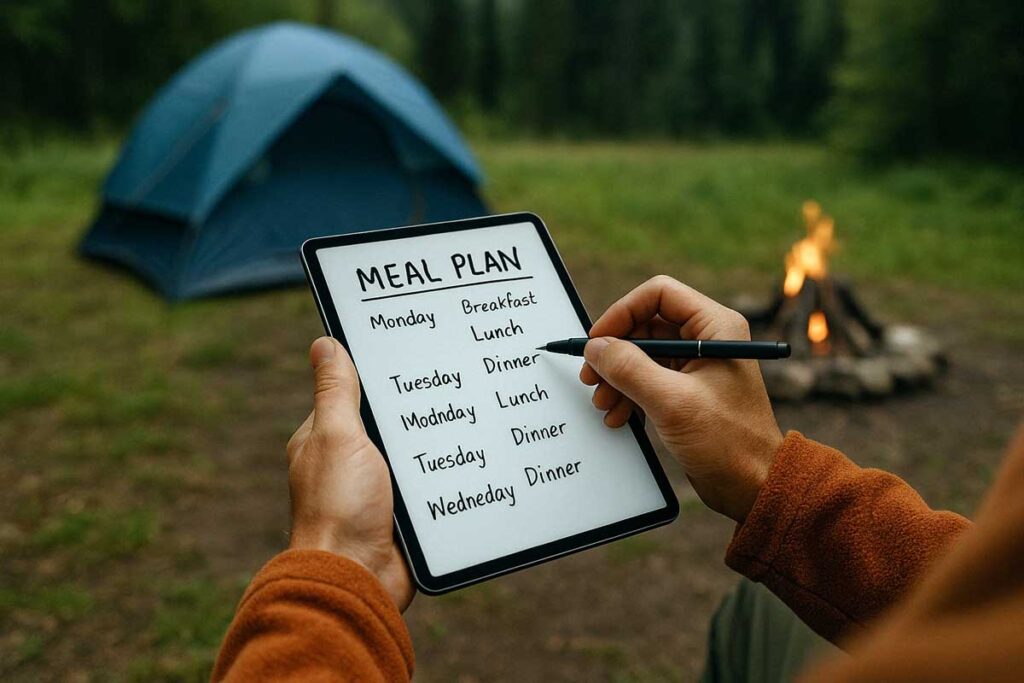
Before you pack, decide on the meals you plan to prepare during your trip. This step is crucial for several reasons:
- Accurate Ingredient Quantities: Avoid overpacking perishable items.
- Balanced Nutrition: Ensure that each meal provides necessary energy and nutrients for outdoor activities.
- Time Management: Choose recipes that fit within your available cooking time and skill level while camping.
Steps:
- Write down every meal for the entire trip, including breakfast, lunch, dinner, and snacks.
- Create a detailed shopping list based on your planned meals.
- Factor in items for both cooking and eating, such as condiments, utensils, and cleaning supplies.
Equipment Inventory
List all the items you need for your camp kitchen. This inventory should include cookware, utensils, and storage items. Doing this ahead of time can save you from last-minute packing challenges.
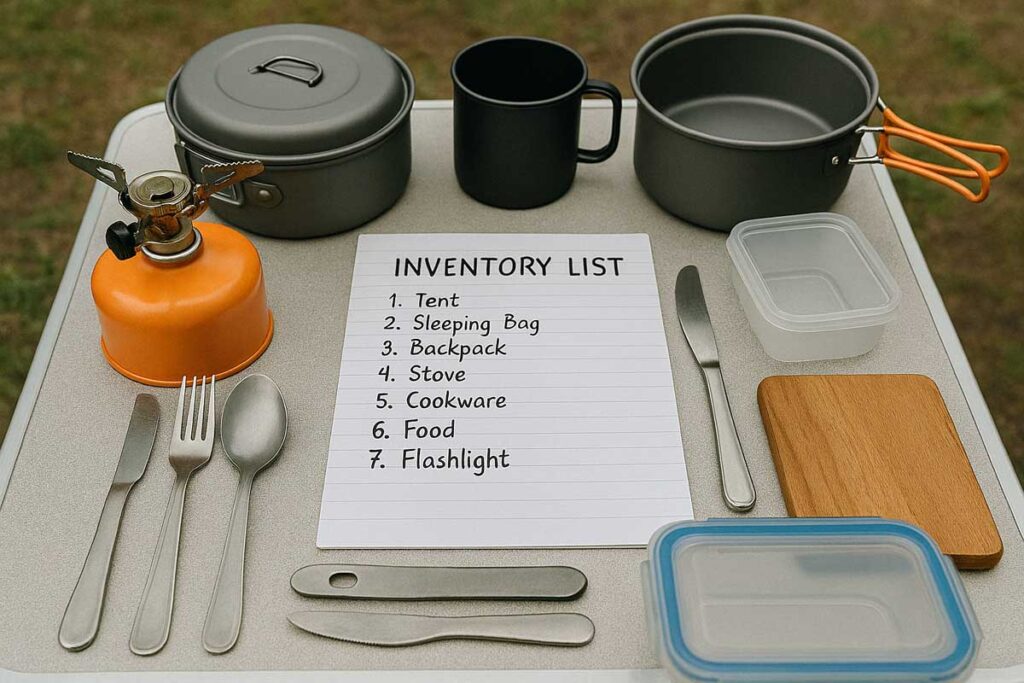
Essential Equipment:
- Cooking Tools: Pot, pan, grill, or portable stove.
- Utensils: Spatula, tongs, knives, and cutting boards.
- Food Storage: Containers, zip-lock bags, and coolers.
- Cleaning Supplies: Biodegradable soap, scrubbing pads, and dishcloths.
- Other Supplies: Can opener, fire starter, and multi-tool.
Step-by-Step Guide to Packing Your Camp Kitchen
Below is a detailed, practical checklist and process I follow before every camping trip.
Categorize and Group Items
Organize your items into logical groups. For example, separate cooking gear from food supplies. This grouping will make packing easier and help you locate items quickly at the campsite.
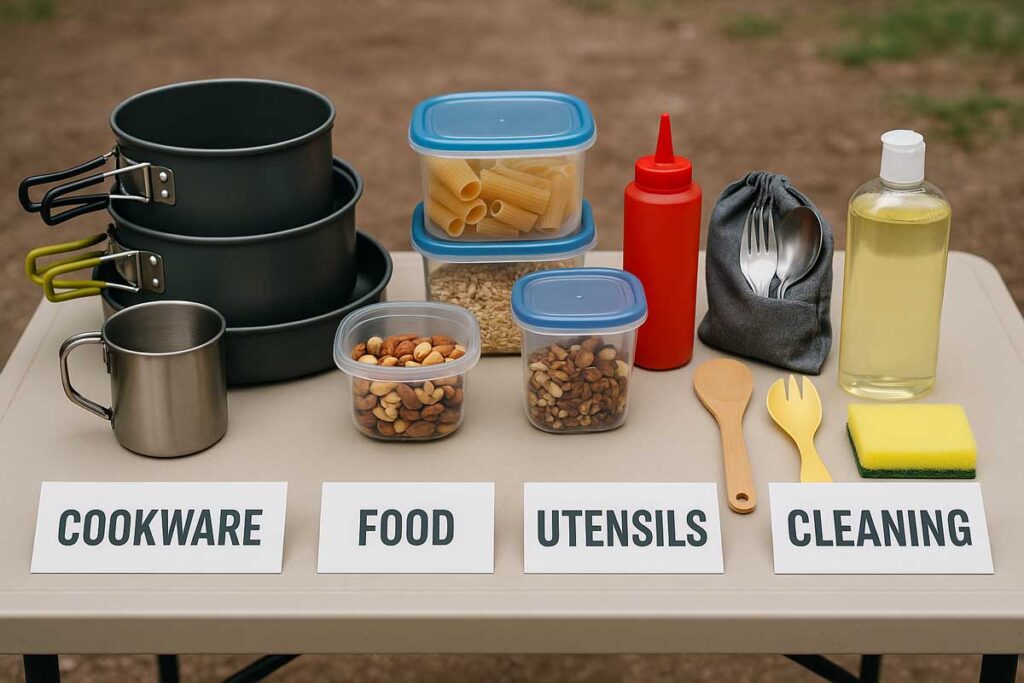
Categories include:
- Cooking Gear: Stoves, pots, pans, grills, and fuel.
- Eating Utensils: Plates, bowls, mugs, cutlery.
- Food and Ingredients: Pre-prepared ingredients, spices, oils, and non-perishable foods.
- Food Storage and Safety: Containers, coolers, and bags.
- Cleaning and Safety Supplies: Soap, towels, and first aid kit.
Use Watertight Containers and Storage Bags
Moisture is a constant concern outdoors. To protect your food and valuable equipment from rain or condensation:
- Use waterproof or watertight containers.
- Pack delicate items in sealed plastic bags.
- For electronics or paper-based documents, consider using dry bags.

Pack by Frequency of Use
Organize items so that those you need more frequently are more easily accessible. For example:
- Place utensils and frequently used spices in the outer compartments.
- Store backup utensils and rarely used appliances in the interior of your bag or box.
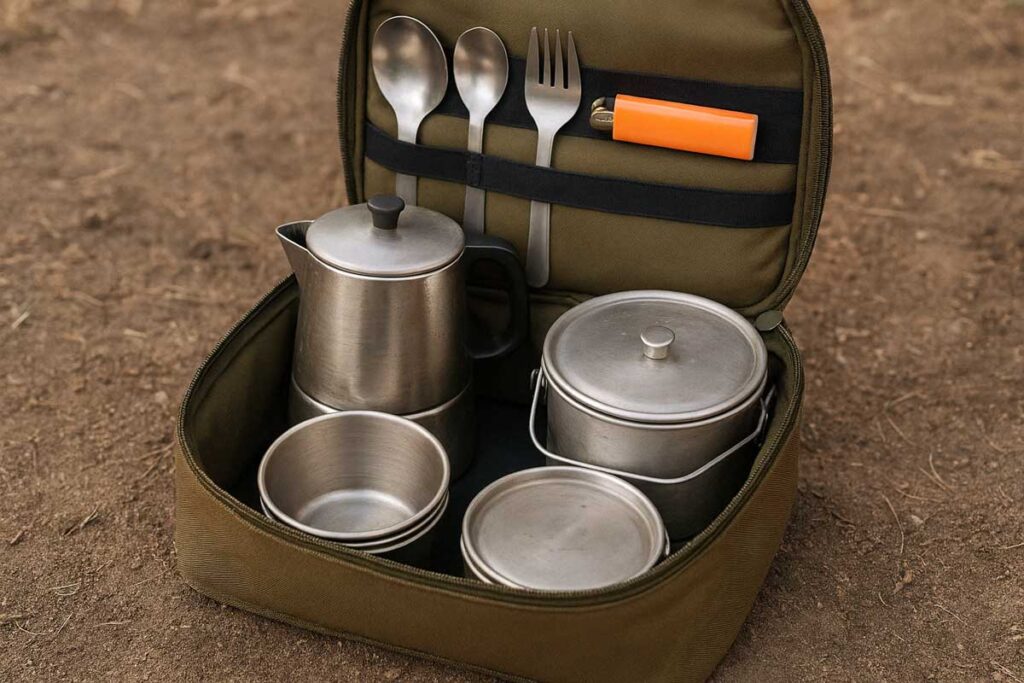
Layering Technique
Arrange your gear in layers to maximize space and protection:
- Bottom Layer: Pack heavier items, such as cookware that can withstand pressure.
- Middle Layer: Arrange food supplies and ingredients. Use containers that prevent spills.
- Top Layer: Place lighter items, eating utensils, and cleaning supplies for easy access.
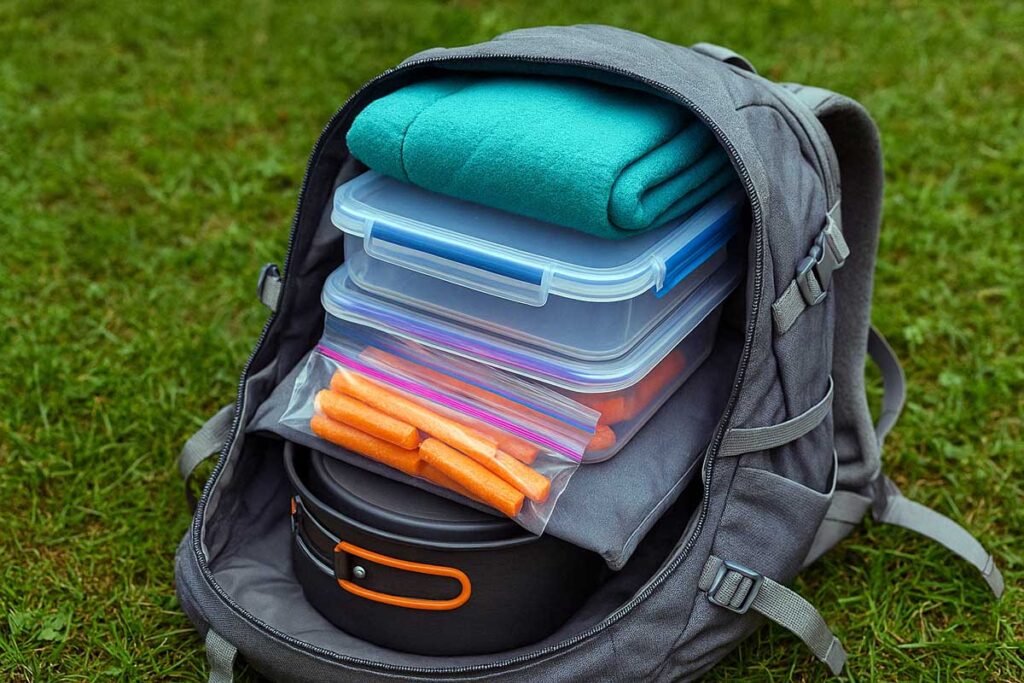
Secure Fragile Items
Ensure items that are easily damaged during transport, like glass containers or delicate electronics, have extra padding. Use cloth or foam wraps, and place them in the center of your bag for protection.
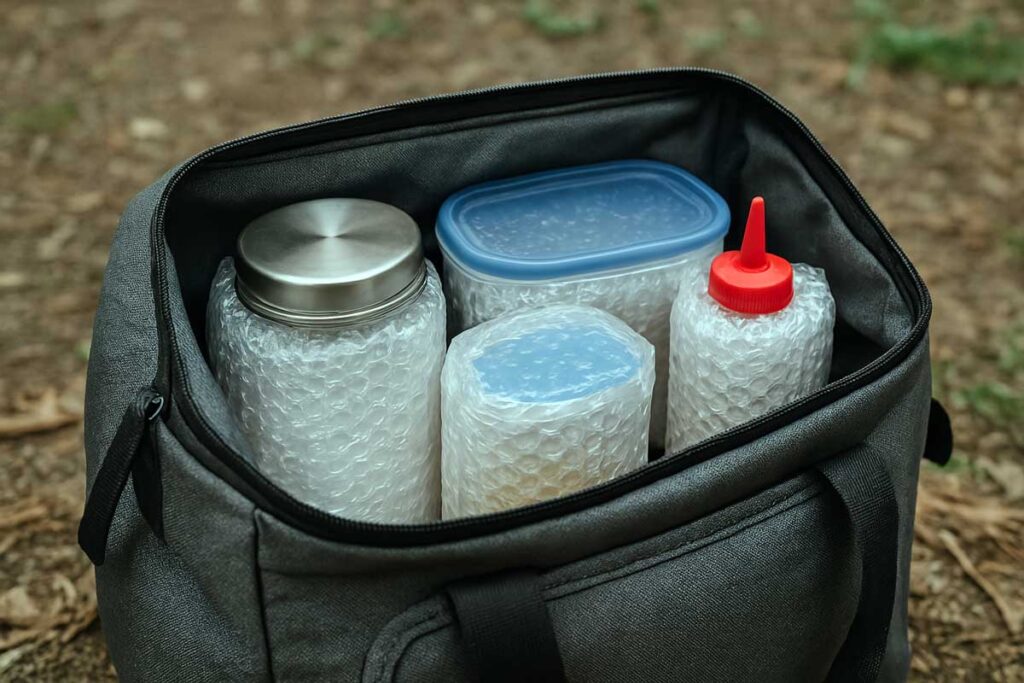
Create a Gear Map or Inventory List
Maintain a checklist of items in your camp kitchen bag. Record each item as you pack, then review the list before leaving. This extra step ensures that nothing is forgotten and that everything is in place when setting up camp.

Equipment and Gear Recommendations
Below is a table summarizing the main equipment categories, their recommended items, and purposes.
| Category | Recommended Items | Purpose |
|---|---|---|
| Cookware | Portable stove, pots, pans, grill, fuel | Cooking meals effectively in an outdoor setting |
| Utensils | Knives, spatula, tongs, cutting board | Food preparation and safe handling |
| Food Storage | Waterproof containers, zip-lock bags, coolers | Preserving food freshness and keeping items organized |
| Eating Utensils | Plates, bowls, mugs, cutlery | Essential for serving and consuming meals |
| Cleaning Supplies | Biodegradable soap, scrubbers, dishcloths | Maintaining hygiene after meal preparation |
| Miscellaneous | Can opener, fire starter, multi-tool | Additional essentials for emergency and convenience |
This table offers a practical reference to ensure no critical piece of equipment is left behind.
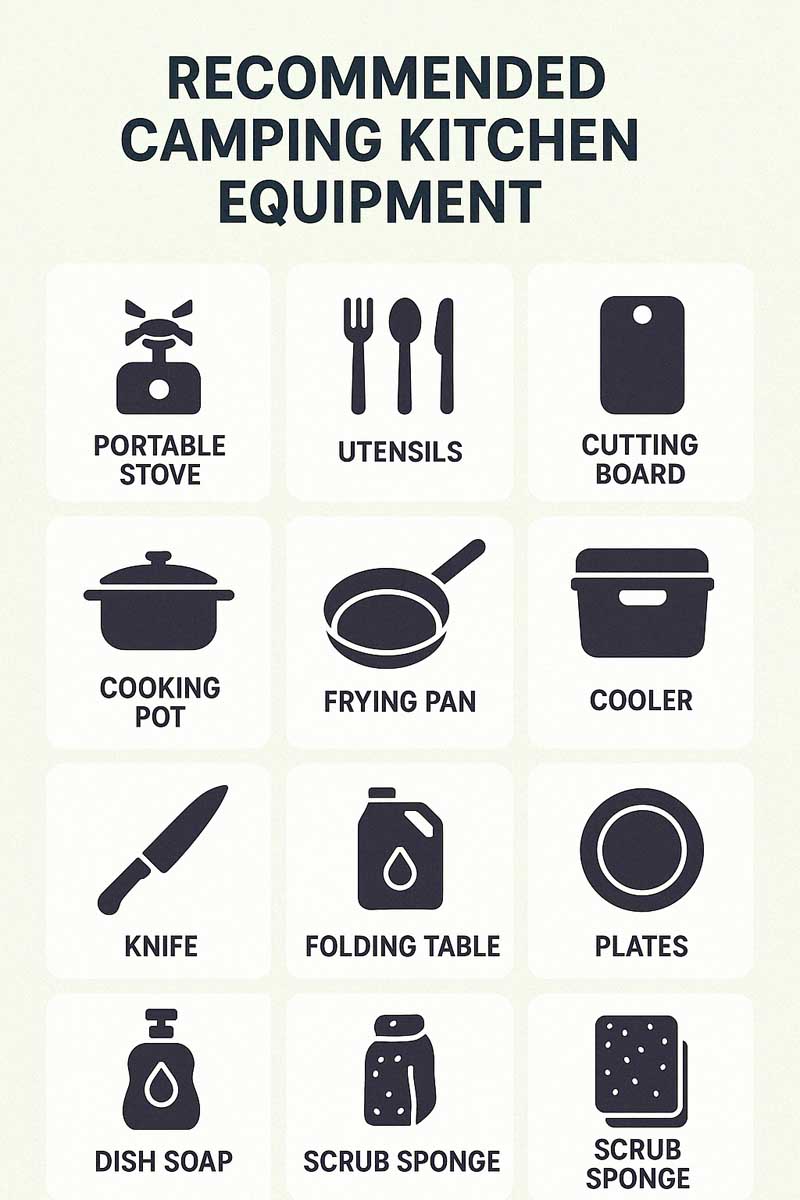
Tips for Maintaining Food Safety on the Trail
Keeping food safe from spoilage and contamination is crucial. Here are some tips that have worked well during my camping trips:

Temperature Control
- Coolers and Ice Packs: For perishable items like dairy, meat, and fresh produce, use a well-insulated cooler with plenty of ice or ice packs. Position the cooler where it remains out of direct sunlight.
- Divide Perishable and Non-Perishable: Whenever possible, separate items that need refrigeration from those that can be stored at room temperature.
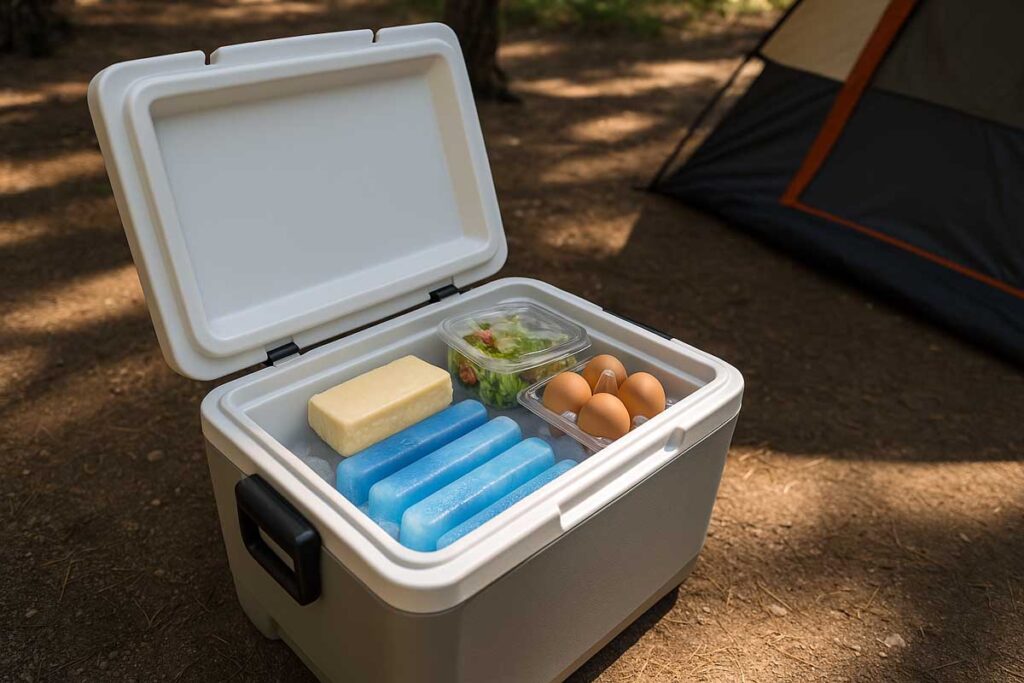
Proper Sealing and Storage
- Use vacuum-sealed bags or airtight containers to maintain freshness.
- Avoid overpacking containers; leave some space for air circulation to prevent moisture build-up.
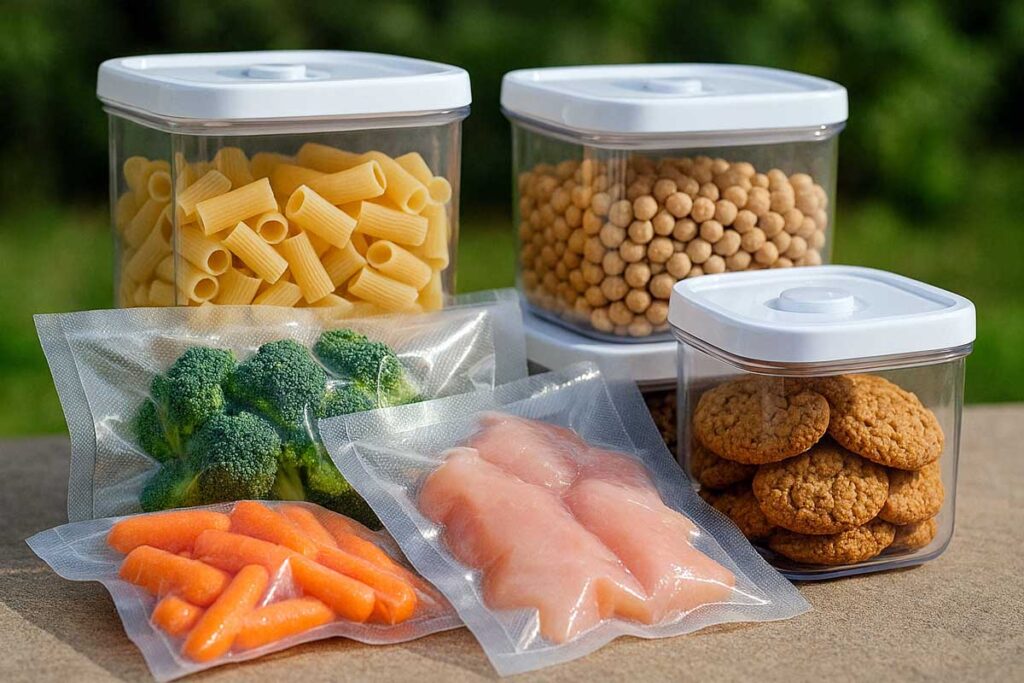
Regular Checks and Cleaning
- Daily Reviews: On longer trips, check the condition of your food and kitchen gear each day.
- Clean Spills Immediately: Prevent cross-contamination by cleaning spills promptly.
- Keep Hand Sanitizer Handy: Use sanitizers before handling food or cleaning utensils.
Preventive Measures
- Pest Control: Seal food items well to avoid attracting wildlife.
- Dedicated Food Storage: Use separate containers specifically for food items that require different handling methods.
- Pre-portion Food: Pack already measured portions to reduce exposure to air and contaminants.
Setting Up the Camp Kitchen on Arrival
Once you reach your campsite, having pre-planned packing will help you set up quickly and efficiently.
Choose the Right Location
- Select a flat surface away from heavy foot traffic.
- Ensure the area is sheltered from rain to protect your supplies.
Unpack in a Logical Order
- Food Items First: Start by opening coolers and containers to quickly store perishables in an appropriate location.
- Organize Cooking Tools: Place frequently used items at arm’s reach.
- Maintain a Clean Area: Keep a designated space for waste management.

Organize Your Workspace
- Lay out a dedicated spot for food preparation.
- Arrange utensils, cooking tools, and ingredients logically to minimize unnecessary movement.
- Use a portable table if possible to create a stable workspace.
Camping Kitchen Packing Checklist
Before you head out, use this checklist to make sure all the essentials are covered. I have used this checklist for many successful trips and have refined it over time.
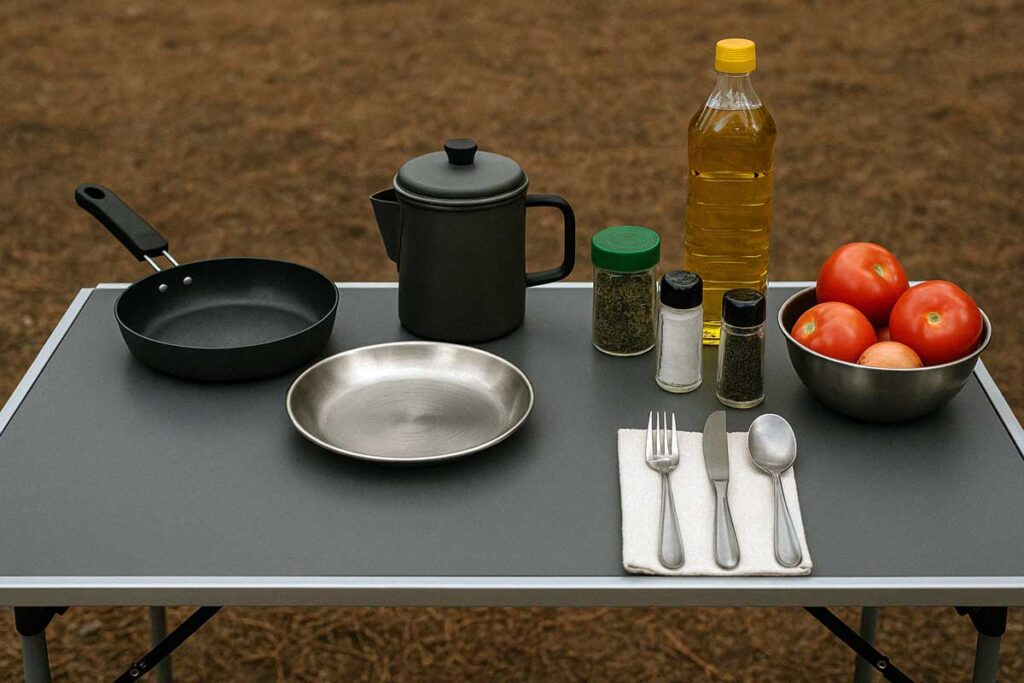
1. Meal Plan and Shopping List
- Breakfast, lunch, dinner, and snacks
- Non-perishable and perishable food items
- Condiments and spices
2. Cooking Equipment
- Portable stove or grill
- Pots, pans, and kettles
- Fuel for the stove
3. Utensils and Tools
- Knives, spatulas, and tongs
- Cutting board and can opener
- Multi-tool or basic repair kit
4. Food Storage and Safety
- Waterproof containers or bags
- Cooler with ice packs
- Vacuum-sealed bags for pre-portioning foods
5. Eating Supplies
- Plates, bowls, and cutlery
- Mugs or cups for beverages
- Napkins or reusable cloths
6. Cleaning Supplies
- Biodegradable dish soap
- Scrubbers and dishcloths
- Hand sanitizer
7. Miscellaneous Items
- Fire starter or matches
- First aid kit
- Waste bags for trash
Taking a few minutes to review this checklist can save you significant time and stress when packing your gear.
Lessons Learned from Personal Experience
Over the years, I have learned that the success of a camping trip often depends on a well-organized camp kitchen. Here are a few insights from my personal experiences that might be helpful:
- Overpacking vs. Underpacking: Striking a balance is key. Overpacking can lead to disorganized gear and excessive weight, while underpacking can leave you without necessary supplies. Evaluate each item’s necessity and weight before adding it to your pack.
- Practice Runs: If you’re new to camping or trying out new equipment, set up a mini camp kitchen at home. This practice can help you identify potential problems and adjust your list accordingly.
- Flexibility: Weather and unexpected delays can affect your food plans. Keeping a few versatile, non-perishable items in your pack can provide a safety net when plans change unexpectedly.
FAQs about Camp Kitchen
Final Thoughts
Packing a camp kitchen efficiently is all about planning, organization, and knowing your essential needs. Here’s a brief recap of the key steps:
- Plan Your Meals and Gear: Establish a meal plan and inventory your gear in advance.
- Organize by Categories: Group similar items together for easy access and use packing cubes or resealable bags for further organization.
- Pack in Order of Use: Place frequently used items on top and heavier items at the bottom to ensure balance during transport.
- Keep it Clean and Maintained: Regularly clean and inspect your gear, updating your kit as needed for each new adventure.
Over the years, I have learned that an efficiently packed camp kitchen not only saves time but also enhances the overall camping experience. Every piece of equipment, no matter how small, has a role to play.
I hope these tips help you prepare for your next camping trip. Packing your camp kitchen should be as enjoyable as setting up camp.
For any questions or further tips on how to efficiently manage your camp gear, feel free to drop a comment. I’m always ready to share more insights based on real trips and experiences, ensuring that each camping venture becomes a seamless and memorable outing. Safe travels and happy camping.
